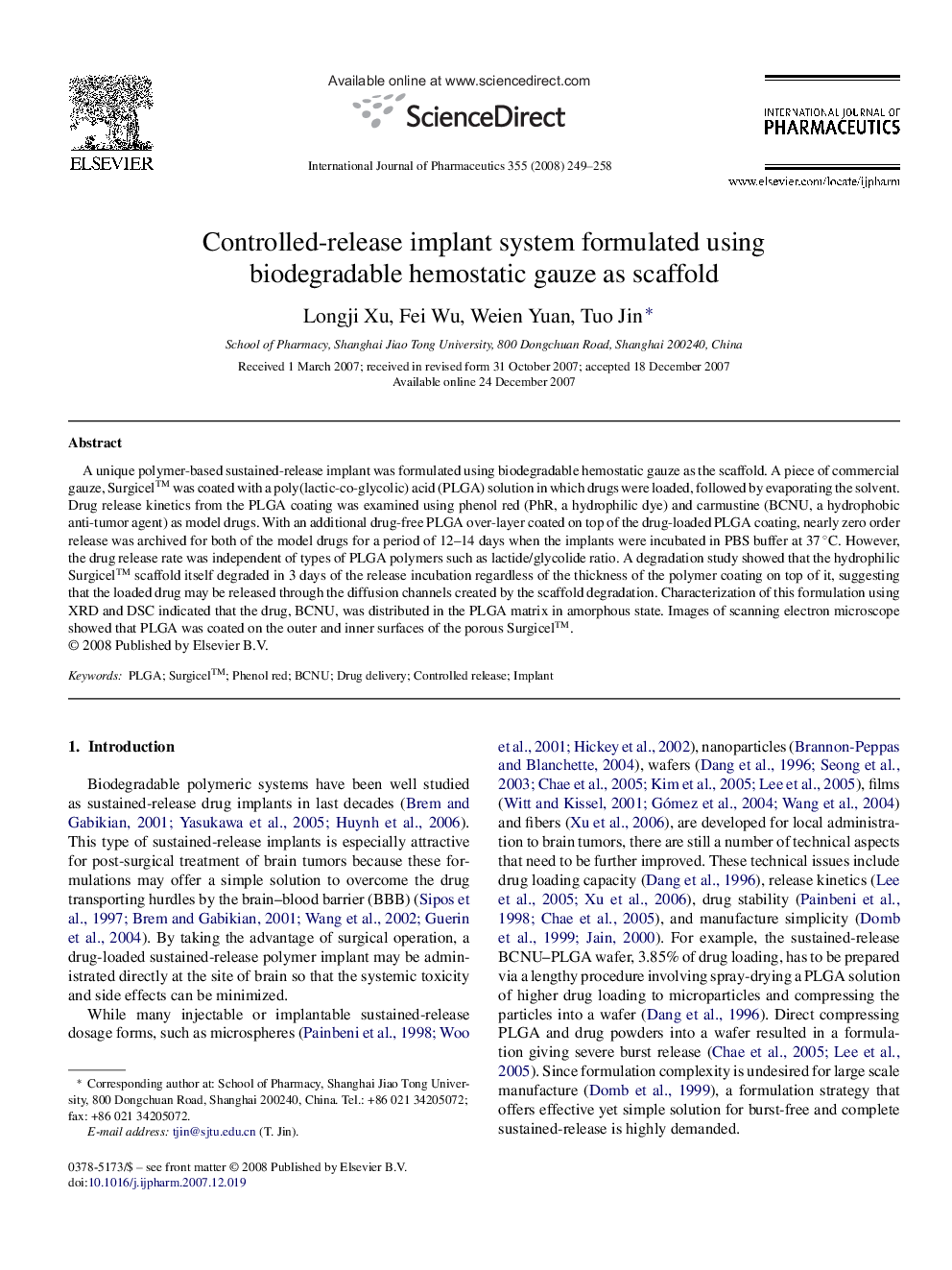| Article ID | Journal | Published Year | Pages | File Type |
|---|---|---|---|---|
| 2505591 | International Journal of Pharmaceutics | 2008 | 10 Pages |
A unique polymer-based sustained-release implant was formulated using biodegradable hemostatic gauze as the scaffold. A piece of commercial gauze, Surgicel™ was coated with a poly(lactic-co-glycolic) acid (PLGA) solution in which drugs were loaded, followed by evaporating the solvent. Drug release kinetics from the PLGA coating was examined using phenol red (PhR, a hydrophilic dye) and carmustine (BCNU, a hydrophobic anti-tumor agent) as model drugs. With an additional drug-free PLGA over-layer coated on top of the drug-loaded PLGA coating, nearly zero order release was archived for both of the model drugs for a period of 12–14 days when the implants were incubated in PBS buffer at 37 °C. However, the drug release rate was independent of types of PLGA polymers such as lactide/glycolide ratio. A degradation study showed that the hydrophilic Surgicel™ scaffold itself degraded in 3 days of the release incubation regardless of the thickness of the polymer coating on top of it, suggesting that the loaded drug may be released through the diffusion channels created by the scaffold degradation. Characterization of this formulation using XRD and DSC indicated that the drug, BCNU, was distributed in the PLGA matrix in amorphous state. Images of scanning electron microscope showed that PLGA was coated on the outer and inner surfaces of the porous Surgicel™.
